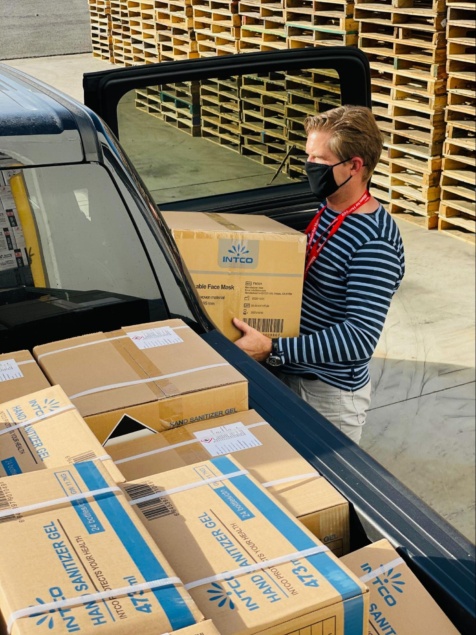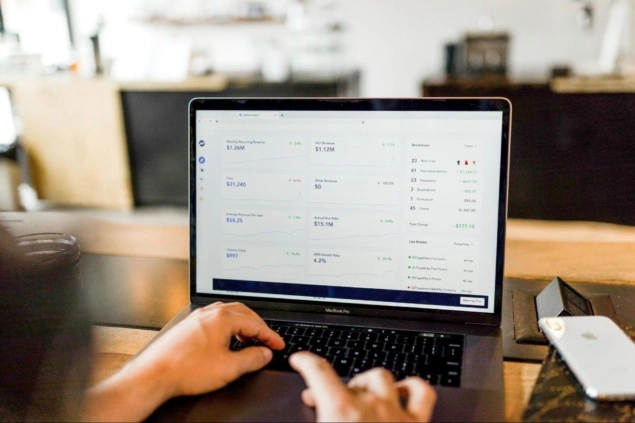A lot of good things happened to the e-commerce industry in 2021. No wonder the number of digital buyers globally grew to 2.14 billion in 2021.
What’s more, the global e-commerce industry is projected to grow at a rate of 26.7%, going from $4.8 trillion in 2021 to $6.4 trillion in 2024. With such growth, ensuring the highest efficiency and profitability in all the organizational verticals has become more important than ever.
Customers now prefer convenience over everything else, so making your e-commerce website simple and intuitive is a must. For instance, if you have a Shopify online store, there has never been a better time to focus your SEO efforts on gaining and retaining customers.
When we talk about the core departments within an e-commerce company, the fulfillment process is an important one.
What is e-commerce fulfillment?
E-commerce fulfillment or order fulfillment is a core process that encompasses all the steps starting from order placement to delivery. It starts when the seller receives the order and includes various stages including inventory management, picking, packing, and shipping.

A lot goes into processing the order that the customer places till it is delivered, so the fulfillment process is prone to errors. These errors can prove to be not only inefficient but also costly for your company.
Around 47% of customers say that they are unlikely to associate with an online retailer after a bad shipping experience. That’s just how instrumental the fulfillment process is, for the growth and performance of an e-commerce brand.
For instance, you have an online store selling mobile phones. You are likely to receive a higher number of orders around Christmas. But if your fulfillment process is not robust enough to handle and process that many orders on time, customers are likely to switch to another brand.
Stages of e-commerce fulfillment
Now that you know what the e-commerce fulfillment process entails, let’s discuss the various stages of the process. The entire process can be divided into many ways, but primarily into the following five stages:
Inventory storage and management
The first stage of the e-commerce process is the storage or warehousing of the products. It includes storing your inventory in an organized manner so that it is always easily accessible. Plus, when you store the products, cataloging them will help you keep track of their status at all times.
You should have an organized system for sorting and storing products so that they can be picked easily. Carrying out this stage effectively will also help you calculate the customer demand, and draw up forecasts efficiently.
Order processing
The next stage pertains to the management of incoming orders and processing them accurately with the highest efficiency. No orders should be missed out, and no delivery schedule should be defeated.
Order processing needs to take place in tandem with inventory management so that all the related information is managed in real-time. This is one of the most crucial parts of the fulfillment process and should be executed flawlessly to avoid additional costs.
Picking and packaging
Order picking is the process of collecting products within your order from the warehouse and readying them to be packed and shipped. As an e-commerce company, you should strive to make this process as efficient as possible. Work proactively on reducing the number of trips to pick products and batch similar orders to prevent exuberant travel costs.

According to Ipsos, 72% of Americans said that the packaging played an important role in defining their purchase decision. This goes a long way in defining the importance of having quality packaging and a definitive process for it. You have the opportunity to be creative and personalized with your packaging, but be smart about it. Switch bags for boxes wherever possible to avoid higher shipping costs.
Shipping
Once your order is packed and ready to ship, there are a few more considerations that you should keep in mind. The shipping process is where you can choose to optimize the customer experience.
What’s more, customers are demanding when it comes to shipping. 68% of American customers state that they have abandoned their carts if they did not get free shipping. Offering free shipping has been associated with higher sales and consistent revenues. You can offset the costs by offering free shipping on minimum spend or upsells.
Choose shipping partners that offer faster deliveries at lower costs while delivering your packages in ideal condition — untampered and safe. Also, choose ones that proactively optimize your packaging to reduce costs whenever possible.
Returns
This last stage comes post-delivery but is an equally important determinant of your service quality. Ensuring effective reverse logistics can help you set your brand apart from others and give a positive perception to your customers. A study by UPS suggested that 68% of customers review the return policy of an e-commerce brand before making a purchase.
Fulfillment strategies
Apart from considerations that we have discussed so far, carrying out e-commerce fulfillment effectively requires you to have a comprehensive strategy. As an e-commerce company, there are multiple ways to go about your fulfillment process. We will discuss two different ways you should consider while creating your fulfillment strategy:
Dropshipping
The dropshipping model is popular among online retailers that have just launched or are still in the nascent stages. In this method, the warehouse or wholesaler directly ships the product to the customer. Thus, it eliminates the need for the merchant to hold inventory and incur extra shipping costs.
For example, if you are an e-commerce retailer specializing in headphones, you can ask your sellers to directly ship the order to the customer, thus reducing the turnaround time and operational costs.
The model is ideal for smaller online retailers, but the drawback is that this will not allow you to put your branding on the packages or control the inventory.
Third-party logistics (3PL)
As your e-commerce business grows and scales up, opting for third-party logistics may be the ideal solution for order fulfillment. In this model, you will be outsourcing your fulfillment operations to a third party who has more experience in logistics. Most 3PL providers will offer warehouses, as well as handle all the fulfillment processes including returns management.
For example, if you opt for a 3PL provider as an online retailer of headphones, you can store the most popular products in a warehouse. You can have the 3PL provider handle all the fulfillment stages for you, right from order processing to delivery.
The 3PL model is great for growing businesses as well as large e-commerce companies. It gives you a lot of control over inventory as well as branding and special offers that you want to offer to customers.
What to look for in an e-commerce fulfillment service?
Needless to say, if you are choosing a fulfillment center to manage your processes, you should consider a few crucial parameters so that your operations are carried out effectively:
Shipping speeds
Shipping speeds are absolutely important for encouraging customers to buy from you. Faster your deliveries, better the chances of customers preferring your website as their shopping destination. Finding fulfillment centers that have a shorter turnaround time should thus be at the top of your checklist.

Costing
Fulfillment costs can skyrocket if the process is not carried out smartly. While choosing a fulfillment partner, check for the discounts that they offer, and the rates that they apply for all kinds of orders and shipping requirements. Ideally, you want a fulfillment partner who helps you reduce the costs associated with the process.
Order fulfillment software
Most fulfillment centers offer access to automated order fulfillment software, which is not just a plus anymore. For most companies, it is an absolute necessity. When you are selling on multiple channels, such software can help you manage the inventory and monitor the status of your orders in real-time. It can save a ton of time and cost for your e-commerce business.

Returns management
Managing returns efficiently and promptly is a key service offering that you can provide to customers. Choose fulfillment centers that have a set process for managing returns and experience dealing with such orders seamlessly.
Customization/branding
Most fulfillment centers will also provide you plenty of options for branding or customizing your packaging. Ensure to choose such partners as the packaging is likely to leave a lasting impression on your customers.
Top 5 best e-commerce fulfillment services
By now, you know what to look for while choosing the right fulfillment center. Here are some of the most popular and trusted fulfillment service providers that have garnered fame through the quality of their services:
#1 PACK & SEND
Known for being Australia’s top-rated and most preferred logistics provider, Pack & Send deserves a mention on this list for its versatility and network. The company offers all the salient features that come with reputed fulfillment service providers including automated fulfillment software, micro-fulfillment, and forward fulfillment options, and international shipping.
#2 Rakuten
Rakuten is one of the leading shipping and logistic service providers in the United States. The company has established strategic partnerships with multiple courier partners including UPS, FedEx, DHL, First Mile, and United States Postal Services allowing them to deliver products within the country at record turnaround times. With fulfillment centers across the country, Rakuten is one of the preferred providers for e-commerce companies in the United States.
#3 ShipBob
With a global logistics network, ShipBob is a name that is synonymous with e-commerce fulfillment. The biggest advantage of ShipBob is that they deliver across the globe to all locations that their shipping carriers cater to. With a strong courier network including UPS, FedEx, and DHL, the company serves many global e-commerce customers at a 99.95% accuracy rate.
#4 Fulfillment by Amazon (FBA)
This one is exclusively for Amazon sellers but definitely worth a mention considering the scale at which they operate. FBA provides a complete suite of fulfillment services including access to the warehouse, management of product listings on Amazon, and shipping. More importantly, this makes your product eligible for Prime shipping, which has 200 million subscribers worldwide. This undoubtedly opens up your business to a whole lot of global customers.
#5 ShipMonk
Last but not the least, we have ShipMonk — a logistics provider specializing in e-commerce fulfillment. ShipMonk offers comprehensive backend software with detailed modules for the various stages of fulfillment that integrate seamlessly with sales channels. For now, ShipMonk has a wide network of warehouses in the US, and planned expansions in Europe increasing their international fulfillment capabilities.
Wrapping up
E-commerce fulfillment is an important albeit cumbersome part of organizational operations. They not only. The service quality and capabilities of your online store are often defined by the way you carry out your fulfillment.
Hence, finding the right strategy and approach to suit your needs is necessary. You also need to be diligent about choosing a worthy fulfillment service provider who is able to align with your goals and objectives.
FAQ
What is a fulfillment strategy?
Fulfillment Strategy is defined as the approach that you as an e-commerce company take towards processing your order and getting your products and services to your customers. Two of the most common fulfillment strategies are: Dropshipping and Third-Party Logistics.
How long should an order take to process?
The standard turnaround time for order processing and fulfillment is 3-8 days.
What does fulfillment status mean?
The fulfillment status or the order fulfillment status pinpoints the exact stage of fulfillment process that an order has reached.



